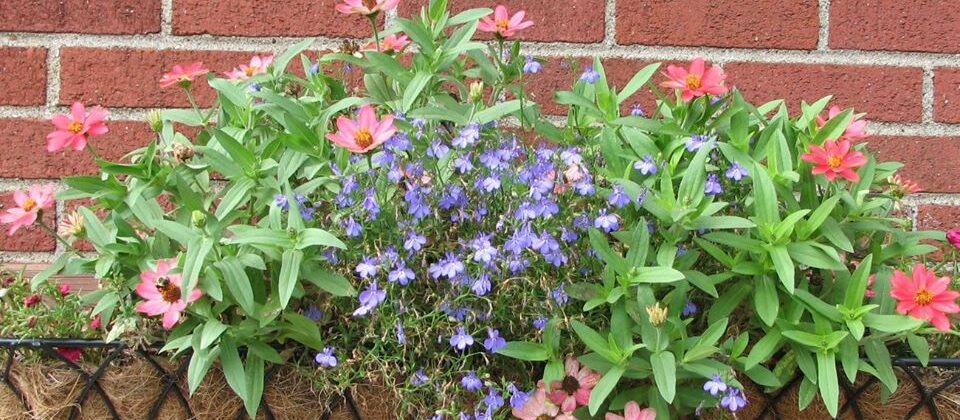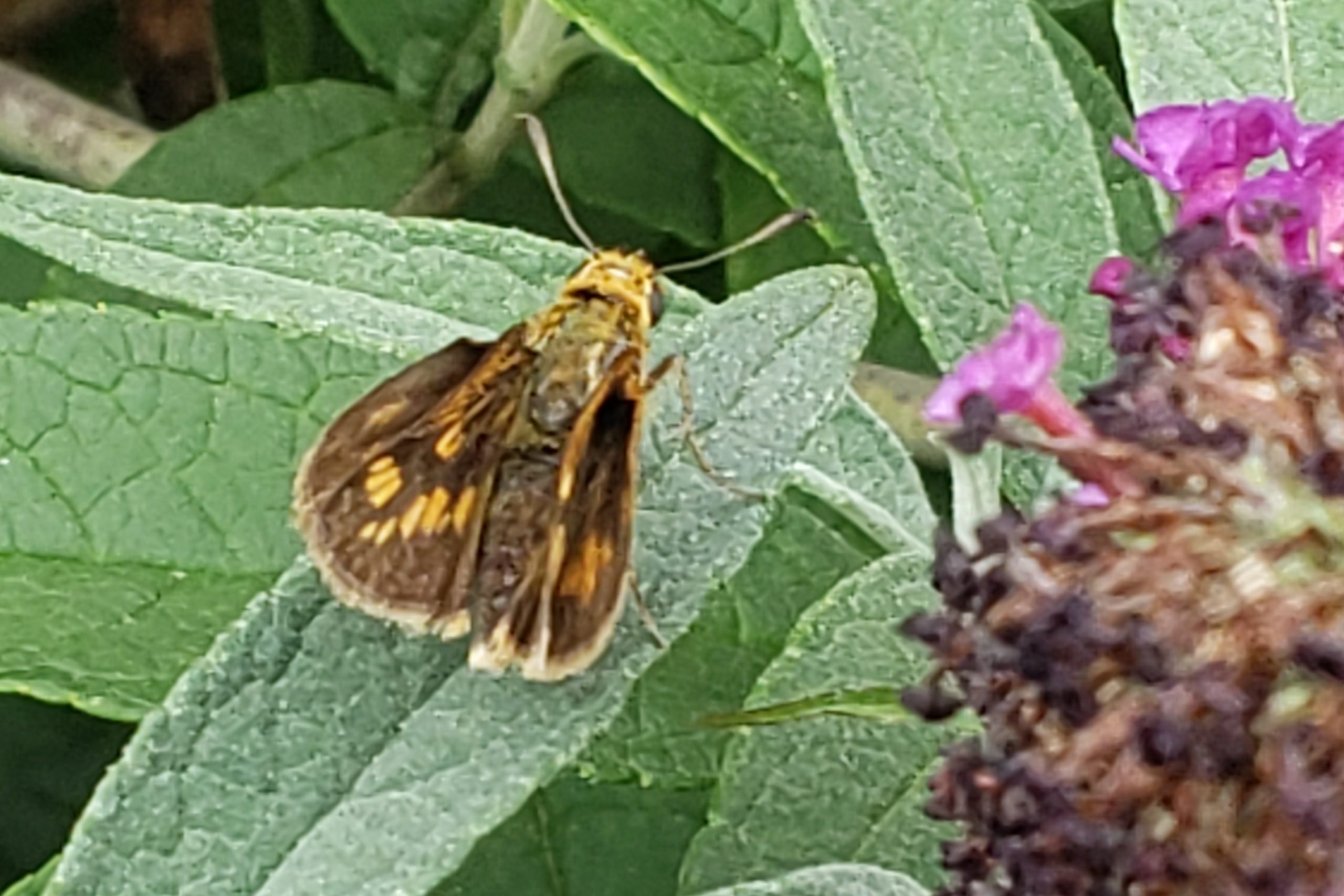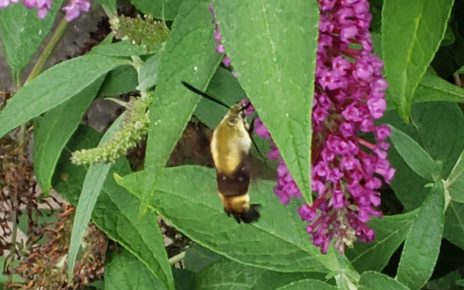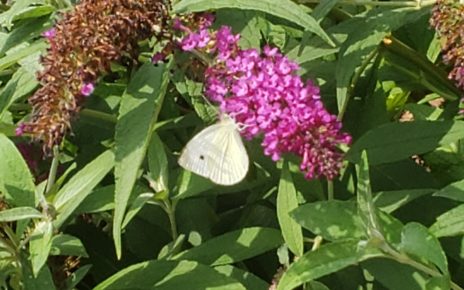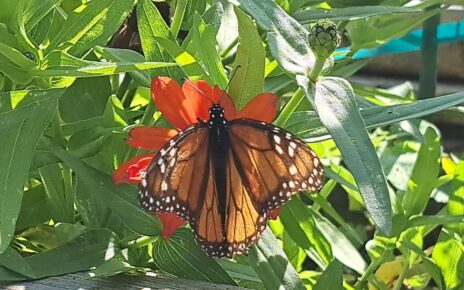I didn’t realize that there were so many different species of skippers! While I am not a skipper identification expert, my Picture Insect App said that the photo above is a Black Dash Skipper. Considering their small size, they sure do move quickly. I had a heck of a time taking a photo.
Features: Black Dash Skippers are black/brown on top and the underside of the hindwings is reddish brown with a curved band of yellow spots. The wing span is less than 2 inches. The antennae of skippers are shaped like a hook. Skippers have forewings, hindwings and powerful muscles so they can quickly dart around. Skippers look like they are half butterfly and half moth.
Food: Skippers likes grassy areas in a wide variety of habitats where there are shrubs, tall herbs, and grasses. The skippers love my butterfly bushes.
Eggs: You can find the eggs under host plant leaves. In Pennsylvania, two of the host plants are hibiscus and hollyhock.
Caterpillar: Caterpillars will eat the leaves of a host plant. They will rest between a leaf and a stem and strengthen the area with a silk cocoon before they molt into a skipper.
Migration: While skippers only live for about a month, the ones that are still alive will migrate south to enjoy the warmer weather. You will typically find a brood or a bunch of them flying together.
Beneficial: They are beneficial because they are pollinators.
It has been a while since we talked about butterflies. The last one was the red admiral butterfly.
